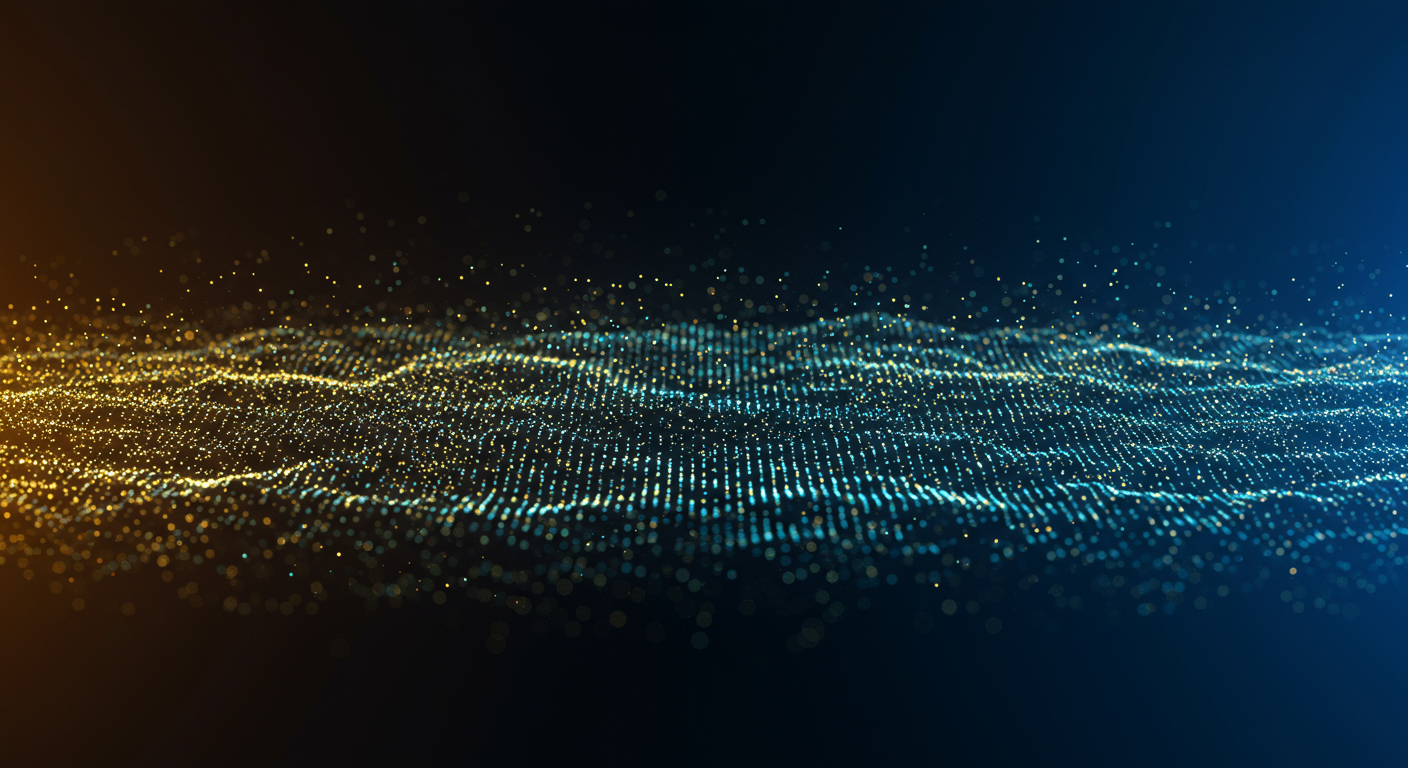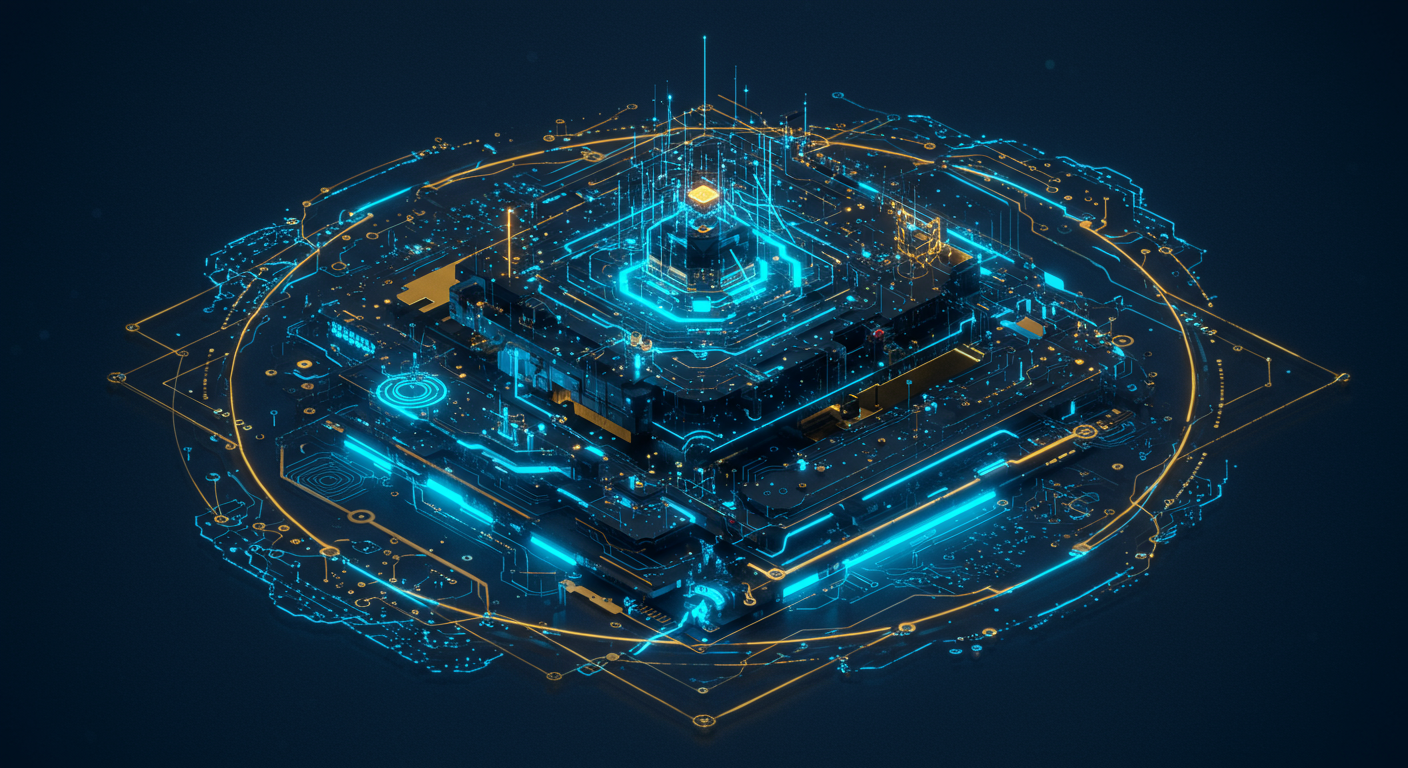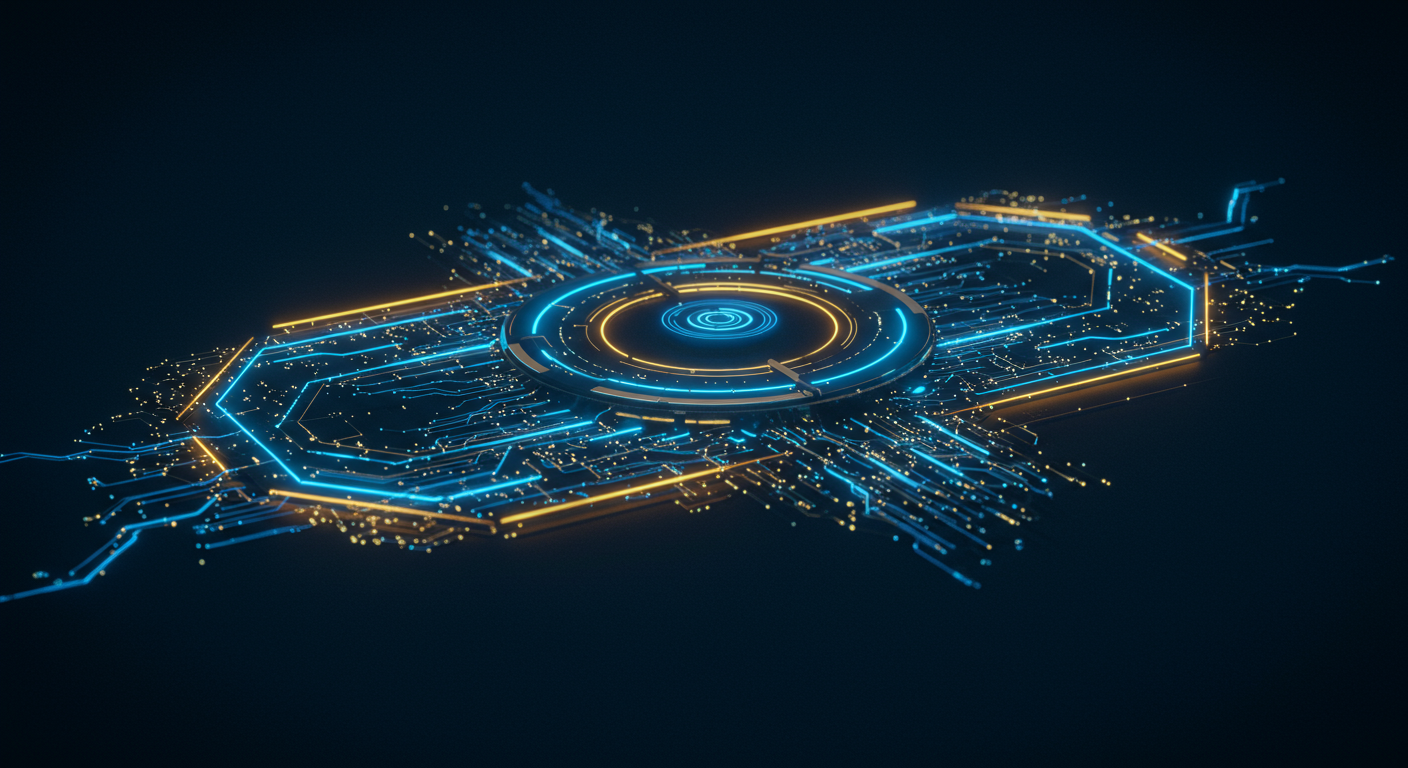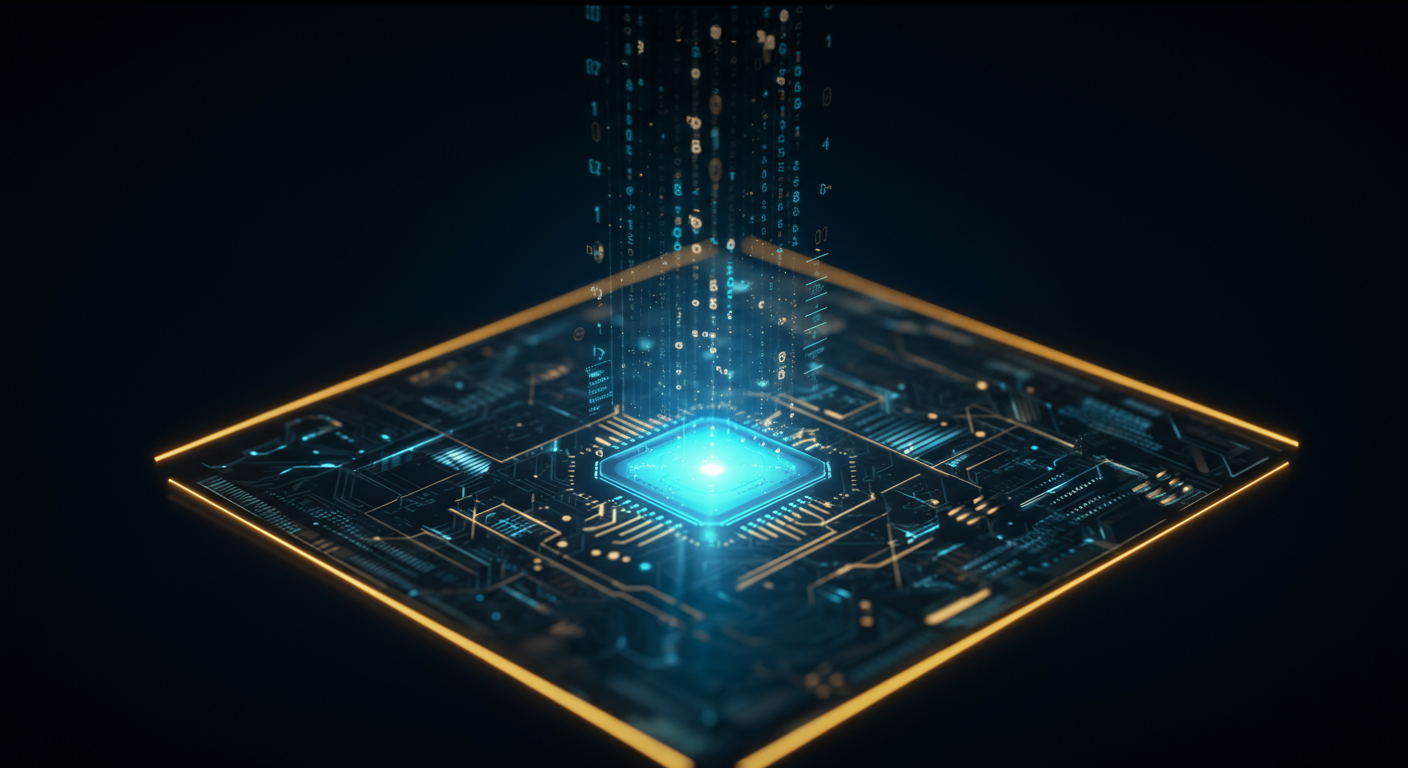AI Observability: Architecting for Insight, Reliability, and Responsible AI

The AI Observability Imperative: From Data Deluge to Actionable Insight
We're swimming in an ocean of deployed AI models, and frankly, most companies are just dog-paddling.
The Complexity Explosion
Think about it: every department is building, training, and deploying AI models, creating an exponential rise in model dependencies and interactions. It's a beautiful mess, but a mess nonetheless.- From recommendation systems to fraud detection, AI is everywhere.
- Each model generates mountains of data – logs, metrics, traces – that are difficult to navigate and even harder to understand.
- Consider a large e-commerce platform; each customer interaction might trigger dozens of different AI models, each with its own data trail.
Why Traditional Monitoring Fails
Old-school monitoring tools simply aren't equipped for this brave new world. They're like using a telescope to understand the stock market: you might see something, but you're missing the crucial details.Traditional monitoring focuses on infrastructure metrics (CPU, memory), offering limited insight into model-specific issues such as data drift or bias.
Defining AI Observability
AI observability isn't just monitoring; it's about understanding why your models behave the way they do. It's the key to unlocking reliability, performance, and ethical AI. This contrasts with the limitations described in the Guide to Finding the Best AI Tool Directory. The tool provides a way to stay up-to-date on modern AI concepts.The Business Case for Observability
Without solid AI observability, you're flying blind, opening yourself up to serious risks.- Model Drift: Performance degrades over time as input data changes.
- Bias: Models perpetuate and amplify existing societal biases.
- Security Vulnerabilities: AI systems become targets for malicious actors.
The Core Principles
AI observability hinges on three key ideas:- Visibility: Knowing what's happening inside your models.
- Understanding: Deciphering why things are happening.
- Actionability: Taking steps to improve model performance and address issues.
AI observability is no longer a luxury, but a necessity for ensuring that these complex systems perform as intended.
Building Blocks of an AI Observability Architecture: Key Components & Considerations

Think of AI observability as the diagnostic tools for your AI models, ensuring they are healthy and performing optimally, much like a doctor monitors a patient's vital signs. Key components for an effective AI observability architecture include:
- Data Collection: Gathering the right data is paramount, acting as the foundation for insight. Collect model inputs, outputs, intermediate activations (the model's "thinking" steps), system metrics, and user feedback. Without this, you're flying blind!
- Data Processing: Raw data is just noise. Extract relevant features, detect anomalies – think identifying unusual patterns in model behavior – and conduct explainability analysis. These steps transform data into actionable insights, allowing you to understand _why_ your ChatGPT or recommendation system is behaving a certain way.
- Data Storage: You need a place to keep all this data, naturally. This could be a data warehouse or a specialized storage solution optimized for AI workloads. Consider Pinecone, a vector database; it is used to help organize and search through high-dimensional data, like embeddings from AI models.
- Analysis & Visualization: This is where the magic happens. Analyze the processed data to identify performance bottlenecks, biases, or other issues. Visualize trends and patterns using dashboards and reports. Tools in the Data Analytics AI Tools category can help.
- Metadata and Lineage Tracking: Vital for reproducibility and debugging. You need to know where your data came from, what transformations it underwent, and which model versions were used. This makes it easier to trace errors and ensure data integrity.
Scalability and Performance
AI observability infrastructure must be able to handle the volume, velocity, and variety of AI data. If your AI Excel Bot is successful, you'll need to grow capacity quickly. Consider:
- Scalable storage solutions that can expand as your data grows.
- Efficient data processing pipelines that can handle real-time data streams.
- Optimized query engines for fast analysis and reporting.
Real-time AI observability isn't a luxury anymore; it's the speedometer on our self-driving AI future.
Defining Real-Time AI Observability
Real-time AI observability is about instantly understanding what's happening inside an AI system as it's making decisions. Think of it like having a live MRI for your neural network; you see the inner workings as data flows through, not just the final output. This is paramount for latency-sensitive applications.Imagine a fraud detection system: a millisecond delay could mean the difference between catching a criminal and letting them slip away.
The Challenge of Speed
Collecting and processing data in real-time is a beast. AI systems often operate at scale, churning through massive datasets at lightning speeds.- Traditional monitoring tools simply can't keep up.
- We need solutions that can handle high-velocity data streams without adding significant overhead.
Minimizing Latency
Here's where the clever stuff comes in. Techniques for minimizing latency in AI observability pipelines include:- Edge Computing: Processing data closer to the source, reducing network delays. Think autonomous vehicles making split-second decisions.
- Streaming Analytics: Analyzing data as it arrives, instead of waiting for it to be batched. Data Analytics AI Tools are critical for spotting anomalies on the fly.
- Efficient Data Structures: Using optimized data formats and algorithms to speed up processing.
Real-World Use Cases
Real-time AI observability is already transforming industries:- Fraud Detection: Identifying and blocking fraudulent transactions instantly.
- Autonomous Driving: Ensuring the safety and reliability of self-driving vehicles.
- Healthcare: Monitoring patient data in real-time to detect anomalies and trigger alerts.
- The AI Tools for Healthcare Providers are crucial for improving patient outcomes.
Security and Privacy Considerations
Observing AI systems in real-time raises unique security and privacy concerns. We need to ensure that sensitive data is protected and that observability tools themselves aren't vulnerable to attack. Tools focused on Privacy Conscious Users are becoming increasingly important.Real-time AI observability is the key to unlocking the full potential of AI, and it's not just about speed; it's about trust, reliability, and responsible AI. It allows us to not just deploy AI but to manage it intelligently. And if you're ready to take charge, our AI Explorer Guide is ready to help.
It's not enough to know your AI is working; you need to understand why it's working (or not!).
Beyond Metrics: Leveraging AI Observability for Proactive Problem Solving
AI Observability flips the script, moving from reactive monitoring to proactive problem-solving. It's about more than just tracking performance metrics; it's about gaining deep, actionable insights into the inner workings of your AI systems. Think of it as a digital stethoscope for your algorithms.
Proactive Issue Identification
Anomaly Detection: AI Observability platforms continuously monitor AI systems, identifying unusual patterns or deviations from expected behavior. This allows for early detection of potential issues before* they impact business outcomes. For example, a sudden drop in the accuracy of a ChatGPT chatbot can trigger an alert, prompting investigation.
- Root Cause Analysis: When an issue arises, AI Observability tools help pinpoint the underlying causes. Imagine a drop in sales attributed to a faulty recommendation engine. With robust observability, you can quickly trace the problem to a specific data anomaly or model bias.
- Predictive Maintenance: By analyzing historical data and identifying trends, AI Observability enables predictive maintenance for AI systems. This allows for scheduling proactive interventions to prevent future failures.
Integration and Collaboration

AI observability isn't a siloed activity. It's a collaborative effort that requires input and action from various stakeholders.
- Incident Management and Alerting: Seamless integration with existing incident management and alerting systems ensures that relevant teams are notified promptly when issues arise.
- Cross-Functional Collaboration: AI Observability facilitates collaboration between data scientists, engineers, and business stakeholders. For example, Software Developer Tools can help in identifying code-related bottlenecks. Shared dashboards and reporting features provide a common understanding of AI system performance and allow for coordinated problem-solving.
AI Observability for Responsible AI: Ensuring Fairness, Transparency, and Accountability
AI is revolutionizing everything, but let's be real: unchecked AI can lead to some serious ethical potholes. Luckily, AI observability is here to pave the road toward responsible AI. It's all about ensuring our models are fair, transparent, and accountable.
Detecting and Mitigating Bias
AI models can inadvertently perpetuate societal biases, leading to discriminatory outcomes. AI observability offers techniques to identify and mitigate these biases, ensuring fairness. For example, regularly monitoring model performance across different demographic groups can reveal disparities, allowing for targeted interventions."Bias is like that stubborn stain – the sooner you spot it, the easier it is to clean up with AI observability."
Enhancing Model Explainability and Transparency
Understanding why an AI model makes a particular decision is crucial for building trust and accountability. AI observability tools can help enhance model explainability, providing insights into the factors influencing predictions. This enhanced transparency is critical in regulated industries. Check out resources on AI in Practice to see how this works!Data Privacy and Security
AI observability must be implemented with a strong focus on data privacy and security. Techniques like differential privacy and federated learning can enable model monitoring and debugging without compromising sensitive data. Privacy-conscious users can explore dedicated AI Tools for further security options.Compliance and Ethical Guidelines
AI observability plays a vital role in ensuring compliance with evolving AI regulations and ethical guidelines. By continuously monitoring model behavior and performance, organizations can proactively identify and address potential issues, demonstrating their commitment to responsible AI practices.AI observability isn't just about debugging code; it's about building trustworthy AI. By embracing these principles, we can ensure that AI benefits everyone, without sacrificing our values. Want to explore further? Delve deeper with this AI Explorer guide!
Here's the deal: AI is rapidly weaving itself into the fabric of, well, everything, and keeping tabs on its inner workings isn't optional – it's crucial.
Tools of the Trade: A Landscape of AI Observability Platforms and Frameworks
AI Observability isn’t just about debugging; it's about understanding, trust, and responsible deployment. Think of it like a doctor monitoring a patient – we need to see what the AI is doing, why it's doing it, and how we can make it healthier. Several platforms are emerging to help us do just that.
Open-Source Options: Building Your Own Insights
Open-source frameworks give you the raw materials for custom observability.- MLflow: Primarily known for model management, MLflow also offers components for tracking model performance and lineage, crucial for understanding model behavior over time. It's an open-source platform to manage the ML lifecycle, including experimentation, reproducibility, deployment, and a central model registry.
- Prometheus & Grafana: While not AI-specific, these tools are staples for monitoring infrastructure and can be adapted to track AI model metrics. Prometheus excels at collecting time-series data and Grafana excels at visualizing it.
- TensorBoard: Originally designed for TensorFlow, TensorBoard is now a versatile visualization tool for machine learning experiments, allowing you to track metrics, visualize model graphs, and examine model weights.
Commercial Platforms: Out-of-the-Box Solutions
These platforms offer comprehensive features and dedicated support.
- Arize AI: Arize AI is an AI observability platform designed to detect and resolve model performance issues in production, offering insights into model drift, data quality, and feature impact.
- WhyLabs: WhyLabs provides a comprehensive AI monitoring solution, focusing on data quality, model drift, and explainability to ensure AI systems perform reliably and ethically.
- Censius AI Observability Platform: The Censius AI Observability Platform is another robust platform built for monitoring AI model performance in production, with features for root cause analysis, explainability, and anomaly detection.
Integration & Selection
Choose wisely: Your AI observability stack should integrate smoothly with your existing MLOps pipeline (think data pipelines, model deployment tools), and fit your specific use cases.
Consider factors like:
- Scalability: Can it handle your growing AI infrastructure?
- Cost: What's the total cost of ownership, including maintenance and expertise?
- Features: Does it offer the specific metrics and insights you need? For instance, if you need help with debugging code, you might want to explore tools for code assistance.
Future Trends
Expect to see more AI-powered observability tools using AI to detect anomalies, predict failures, and suggest improvements. Also, focus is rapidly shifting to better alignment with responsible AI principles (Learn: AI in Practice).
Ultimately, the right AI observability tools are crucial for ensuring your models are not just intelligent, but also reliable, ethical, and truly beneficial. Now, go forth and observe!
Future Horizons: The Evolution of AI Observability and its Impact on the Future of AI
AI observability isn't just about monitoring; it's evolving into a proactive force, driving the next wave of AI innovation.
AI-Powered AI Observability
Imagine AI systems that diagnose their own issues and self-heal. AI-powered Censius AI Observability Platform automates root cause analysis, predicts potential failures, and even suggests optimal configurations. This means less downtime, faster innovation cycles, and a more robust AI ecosystem."The future of AI is one where systems not only learn but also understand how they learn, constantly optimizing themselves for peak performance and reliability."
Integration with Emerging Technologies
The convergence of AI observability with technologies like federated learning and generative AI is particularly exciting. For instance, in federated learning, Kolena can monitor model performance across diverse datasets without compromising data privacy, ensuring fairness and accuracy. AI observability ensures that the outputs from image generation tools like DALL-E 3 remain consistent and aligned with expectations.Community Collaboration and Standardization
The field of AI observability benefits immensely from shared knowledge and standardized practices. Open-source projects and collaborative platforms are crucial in fostering innovation and ensuring that AI systems are developed and deployed responsibly. The responsible-ai-institute is at the forefront of standardizing AI protocols.Enabling Trustworthy AI
Ultimately, AI observability is about enabling the widespread adoption of trustworthy and beneficial AI. By providing clear insights into how AI systems work, we can build confidence in their decisions and ensure that they align with human values. Consider Lakera, an AI observability platform that focuses on uncovering hidden vulnerabilities in machine learning models to ensure the trustworthiness of the models.The future of AI observability is not just about keeping an eye on things; it's about architecting for insight, reliability, and responsible AI, paving the way for a transformative future. For related information, check out the learning guides on AI Fundamentals.
Keywords
AI observability, MLOps observability, AI monitoring, AI debugging, responsible AI, AI model performance, AI infrastructure monitoring, AI data quality, real-time AI observability, AI incident management, AI explainability, AI security, AI governance, AI pipeline monitoring
Hashtags
#AIObservability #MLOps #AIDebugging #RealTimeAI #ResponsibleAI
Recommended AI tools
ChatGPT
Conversational AI
AI research, productivity, and conversation—smarter thinking, deeper insights.
Sora
Video Generation
Create stunning, realistic videos and audio from text, images, or video—remix and collaborate with Sora, OpenAI’s advanced generative video app.
Google Gemini
Conversational AI
Your everyday Google AI assistant for creativity, research, and productivity
Perplexity
Search & Discovery
Clear answers from reliable sources, powered by AI.
DeepSeek
Conversational AI
Efficient open-weight AI models for advanced reasoning and research
Freepik AI Image Generator
Image Generation
Generate on-brand AI images from text, sketches, or photos—fast, realistic, and ready for commercial use.
About the Author

Written by
Dr. William Bobos
Dr. William Bobos (known as 'Dr. Bob') is a long-time AI expert focused on practical evaluations of AI tools and frameworks. He frequently tests new releases, reads academic papers, and tracks industry news to translate breakthroughs into real-world use. At Best AI Tools, he curates clear, actionable insights for builders, researchers, and decision-makers.
More from Dr.

